In my experience of playing racket sports like padel, it’s common that newcomers will try to win points by attempting to hit big, powerful shots the majority of the time. This can work well in racket sports like tennis, but believe it or not, it’s nowhere near as effective in padel! In fact, it can lead to you performing worse than the average player!
It’s only once you truly begin to understand the sport, that you begin to see the importance of patience. By being selective with our shots and using certain techniques over long periods of time, we can frustrate our opponents and deny them easy chances to win points. This style of play can force your opponent into making the first mistake, and once they do that you can pounce on that mistake by playing an aggressive shot like a flat smash or a topspin smash and attempt to win the point.
One of the best ways to frustrate your opponents and deny them point-winning opportunities is by applying backspin to some of your shots. This is something that it’s often difficult for beginners to get the hang of, but once you master it you’ll see an immediate improvement in your game! In this post I’m going to teach you what backspin is, why it’s important and how it can benefit you, and I’ll also teach you how to apply it to your padel shots. Lastly, we’ll finish off the post by looking at some famous backspin-based shots that you’ll see being used regularly! Let’s begin…
What Is ‘Backspin’?
Backspin is literally what the name suggests! It is when the ball spins backwards in relation to its direction of travel. For example, if the ball has been hit forwards over the net towards your opponents, but is spinning backwards as it moves through the air, backspin has been applied to the ball. You can see this illustrated in the diagram below!
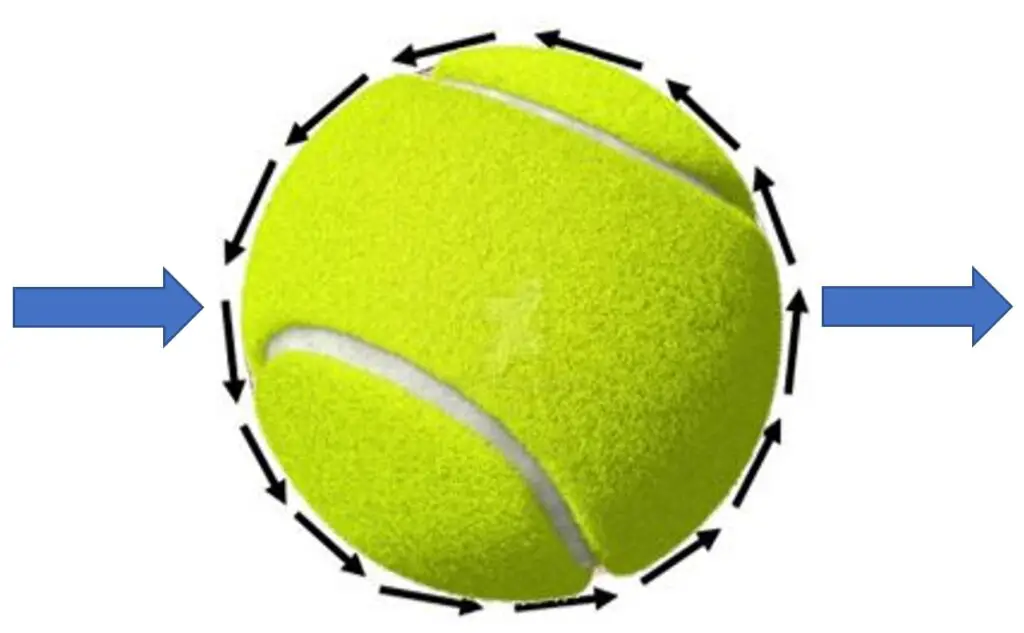
How To Apply Backspin To Your Shots
Now that you know what backspin is, let’s discuss what you need to do to apply it to your shots!
As you might expect, your ability to achieve backspin is totally dependent on how your racket makes contact with the ball. Before we look at the backspin technique though, I should probably show you what the racket-to-ball contact on a normal shot looks like so that you can see the difference between the two!
If you’re hitting a flat shot with barely any spin applied to the ball, the contact between your racket and the ball will look something like the diagram below! As you can see, the racket makes contact with the centre of the ball and follows through along that line. This means the ball will hit the racket and bounce off almost immediately, meaning that there is barely any friction generated between the ball and the surface of the racket. Because of this lack of friction, the ball isn’t forced to spin much as it leaves the racket.
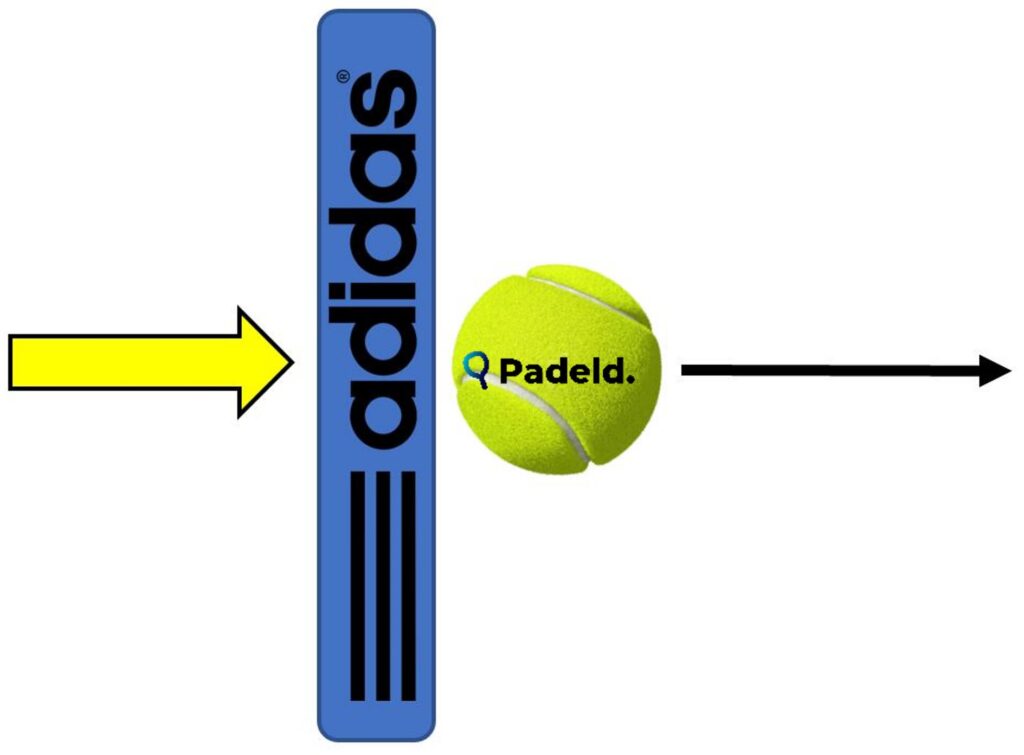
To apply backspin to the ball, you need to make the contact between the racket and the ball occur for slightly longer, generating more friction between the two surfaces. To do this, you need to ‘undercut’ the ball, or ‘slice’ it. If you’re not sure what this means, it basically requires you to angle your racket slightly and strike just below the centre of the ball. When you do this, your racket is basically ‘brushing’ along the underside of the ball, and it is this motion that applies the backspin.
When playing these types of shots, you also need to make sure that once you hit the ball, you ‘follow through’ with your racket arm. This basically means that you should push your racket arm through the ball as you hit it, rather than just stopping the motion of your arm as your racket makes contact with the ball. Following through in this way extends the amount of time that your racket is in contact with the ball and can allow you to impart a greater amount of spin!
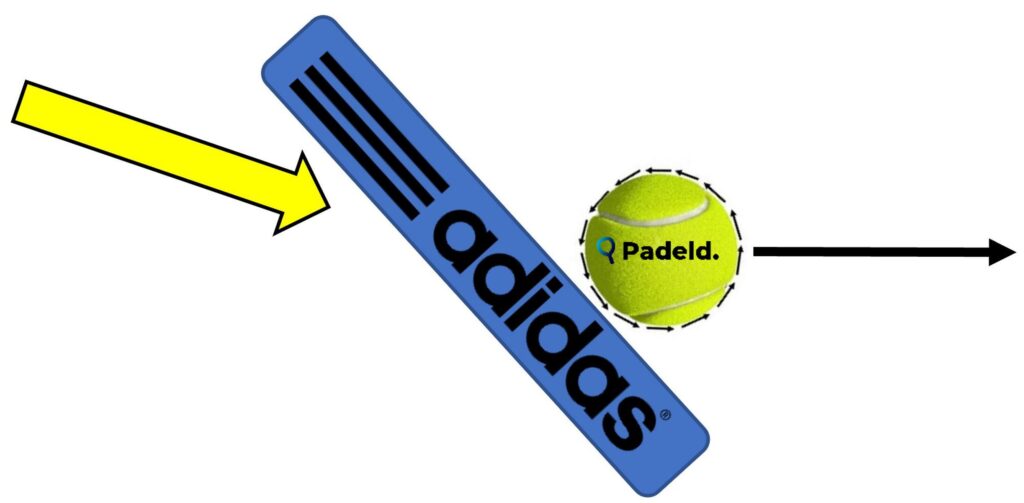
The diagram above shows an example of how backspin is put on a padel ball. As you can see, the racket has been turned at about a 45-degree angle, and the arm is brought through in a slightly downwards direction to allow the racket to brush the underside of the ball.
As I mentioned above, once you make contact with the ball in this way, friction will occur between the ball and the surface of the racket. By increasing the angle of the racket more, you can apply more backspin to the ball, if you feel like that’s something that you need. By decreasing the angle of the racket, you can apply less backspin to the ball. Keep in mind that the more backspin you choose to apply, the harder it will be for you to control the shot and to direct the ball exactly where you want it to go!
Forehand Backspin
To apply backspin when playing a forehand shot, you need to copy all of the points I just made in the section above. However, something I haven’t mentioned is that when playing the forehand backspin shot, the palm of your racket hand will be pointing upwards towards the sky. It should look something like the photo below! As the ball approaches you, rotate your wrist so your hand and your racket are roughly in this position and then slice the ball.
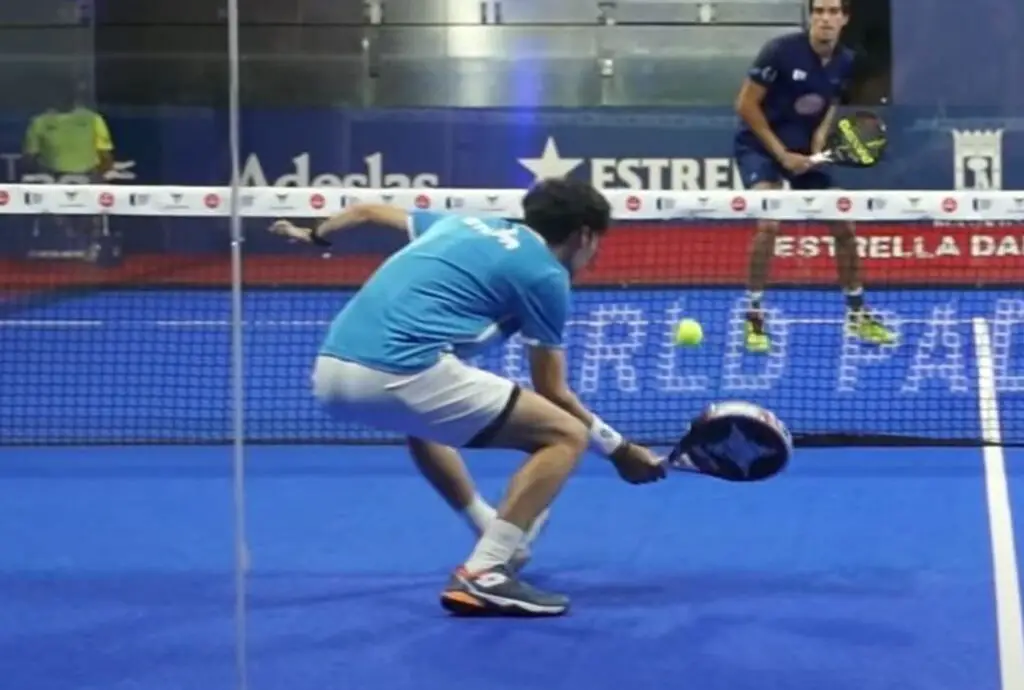
Backhand Backspin
To apply backspin when playing a backhand shot, you need to rotate your wrist and your racket in the opposite direction, so that the back of your hand is pointing upwards towards the sky. As you hit the shot your hand/racket should be in a position like the one shown below!
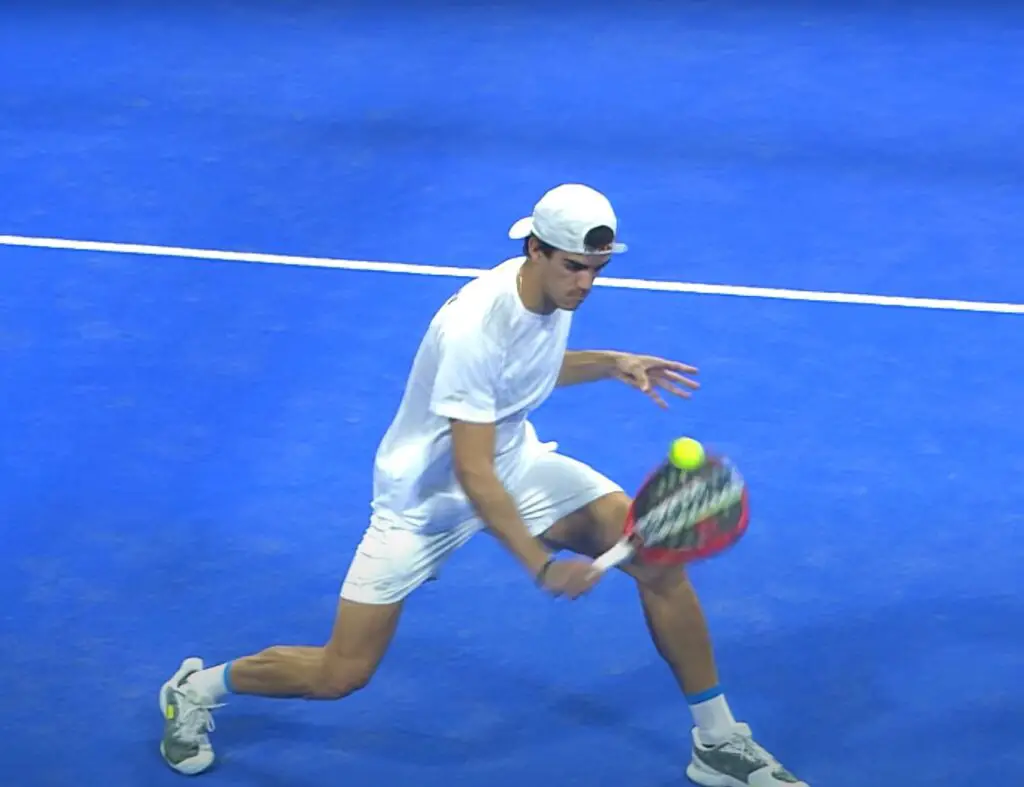
Why Should You Apply Backspin To Your Shots?
As I said earlier, padel is largely a game of patience and strategy. It is not a game that can be won through sheer power alone! Good padel players will take time to work themselves into good positions from which they can win points whilst denying their opponents the opportunity to play point-winning shots.
At this point you may be wondering ‘how does applying backspin help me to achieve that?’, and that would be a great question to ask! Basically, applying backspin to your shots leads to the following two things happening…
The Ball Will Often Not Bounce As High After Hitting The Ground
If a ball is hit at a decent pace with backspin and a little sidespin applied to it, the backspin/sidespin will cause the ball to ‘grip’ on the surface. This grip on the surface will cause the ball to bounce lower to the ground than it usually would if no spin was applied. Lower bounces make it harder for your opponent to return the ball!
When the ball bounces low, they have to hit their shot upwards at a reduced speed to ensure the ball gets over the net and then down onto your side of the court. When the ball bounces higher, your opponent doesn’t have to hit the ball upwards as much, and therefore can hit the ball harder knowing it will drop onto your side of the court more naturally. The diagram below should explain what I mean a little better!
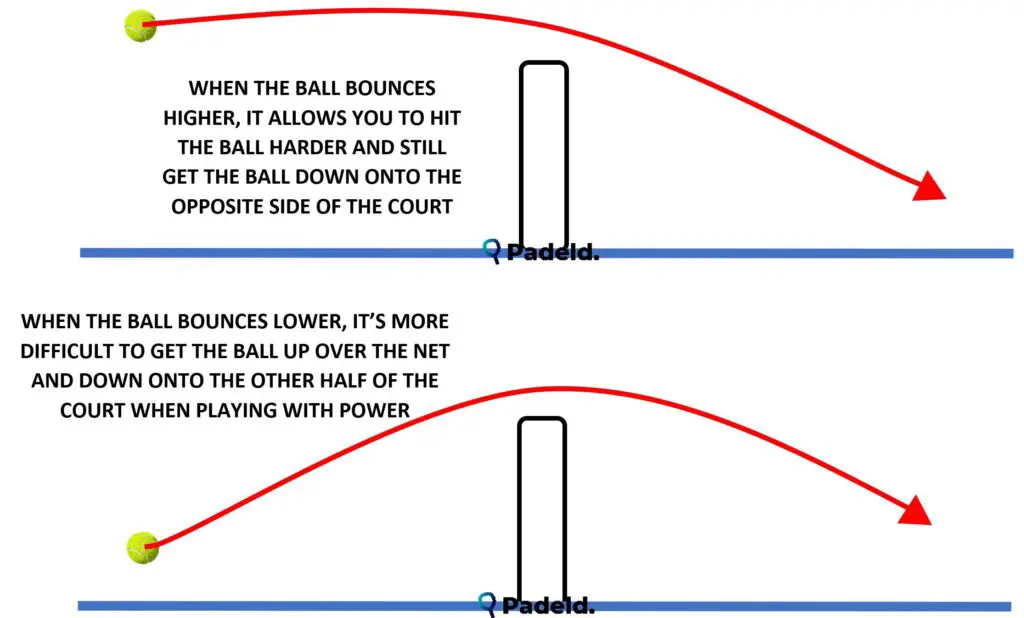
So, by adding backspin (and a touch of sidespin) onto your shots, you can make the ball stick a lot closer to the ground. A perfect example of this is when playing shots like the Bandeja or the Vibora, which we will cover briefly later in this post! These kinds of backspin shots are particularly effective if you can hit them towards the glass in the corners of the court.
If you play a shot purely with backspin on it and no sidespin, such as a dropshot, then this may cause the ball to bounce a little higher than usual. However, the aim of the dropshot is to get so much backspin on the ball that it never reaches your opponent, so a little bit of a higher bounce is acceptable in this case! If the dropshot is played well, the slightly higher bounce will not matter!
Backspin Gives Your Opponent No Pace To Work With
If you put enough backspin on the ball, it will kill a large amount of the momentum in your shot. This means that by the time the ball reaches your opponent, there will not be much speed on the ball at all.
When the ball is travelling fast, your opponent doesn’t have to do much work in order to return your shot. They know that the ball will reach them (whether it comes directly to them or rebounds off the wall first), and that all they have to do is use the pace on the ball and help it on its way back to the other side of the court. When the ball is travelling slower, your opponent has to generate all of the pace on their return by themselves, they can’t simply use the pace of your original shot to their advantage. Additionally, if they allow the ball to bounce off the wall, the slower speed may mean that they misjudge the bounce and the ball fails to make it back to them.
The two reasons above are why backspin shots are so effective in padel, and why you should definitely consider incorporating them into your game!
Examples Of Padel Shots Played With Backspin
Padel has many famous shots that are played with backspin. Here are a few of them:
- The Vibora – The Vibora is an attacking version of the smash that is played with a lot of backspin and sidespin. It is played from advanced positions on the court and is most often used to target the corners of the opponent’s side of the court, as well as the areas close to the glass. This is definitely a shot to add to your game if you want to become a more threatening attacking player!
- The Bandeja – This is a defensive form of the smash which is played with a slight touch of backspin. It can be used from deeper positions on the court, and most players will use it when they’re trying to move back into better areas of the court after being on the back foot for a period of time.
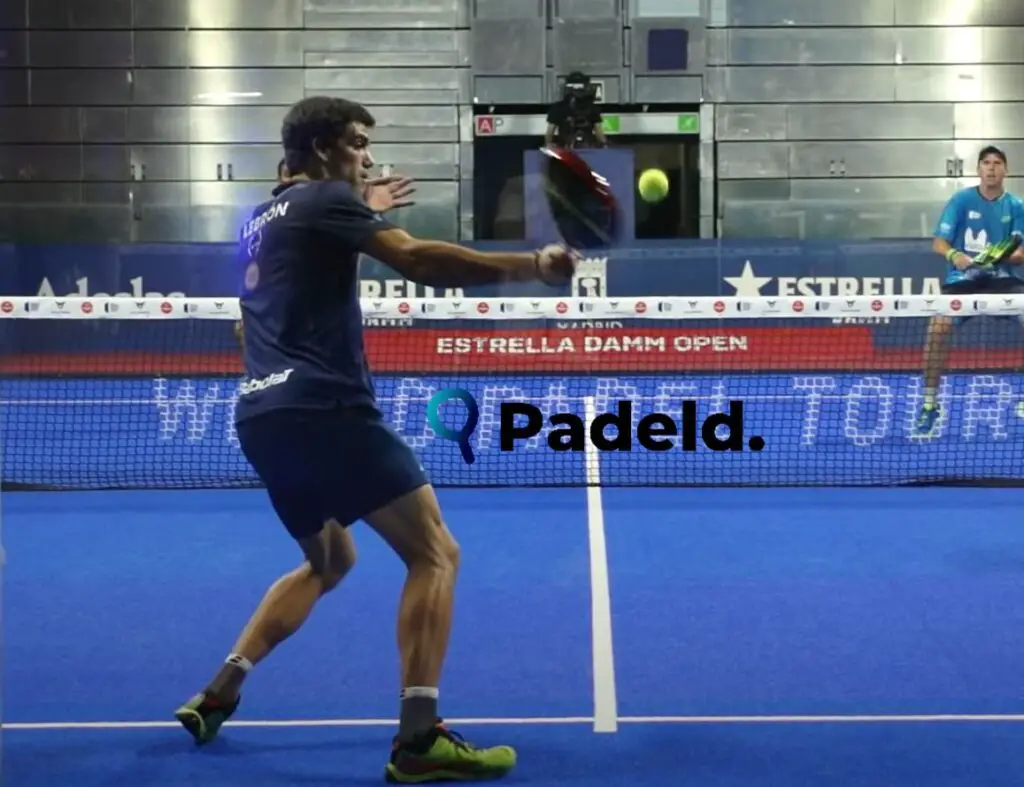
- The Dropshot – This is the shot that is usually played with the highest amount of backspin. The aim with this shot is to trick your opponent into thinking that you’re about to play a powerful shot towards the back of the court, before playing a soft, backspin heavy shot that lands close to the net. It is most often played when you see your opponents are hanging back near the back glass, as this may mean they could fail to sprint forwards and reach the ball before it has bounced twice.
Conclusion
I hope you found this post helpful and that it will assist you in getting more backspin on some of your shots. Playing with spin is hard to get used to at first, but the more you practice it the better you will get at it. In my experience, it takes a while to fully master the required angles and the placement of your shots when applying backspin. However, if you keep using it during practice and during games you should definitely be able to get the hang of it!
If you’re still in the mood to learn more about padel or any of the techniques involved in it, feel free to check out some of the other posts here on padeld.com!
